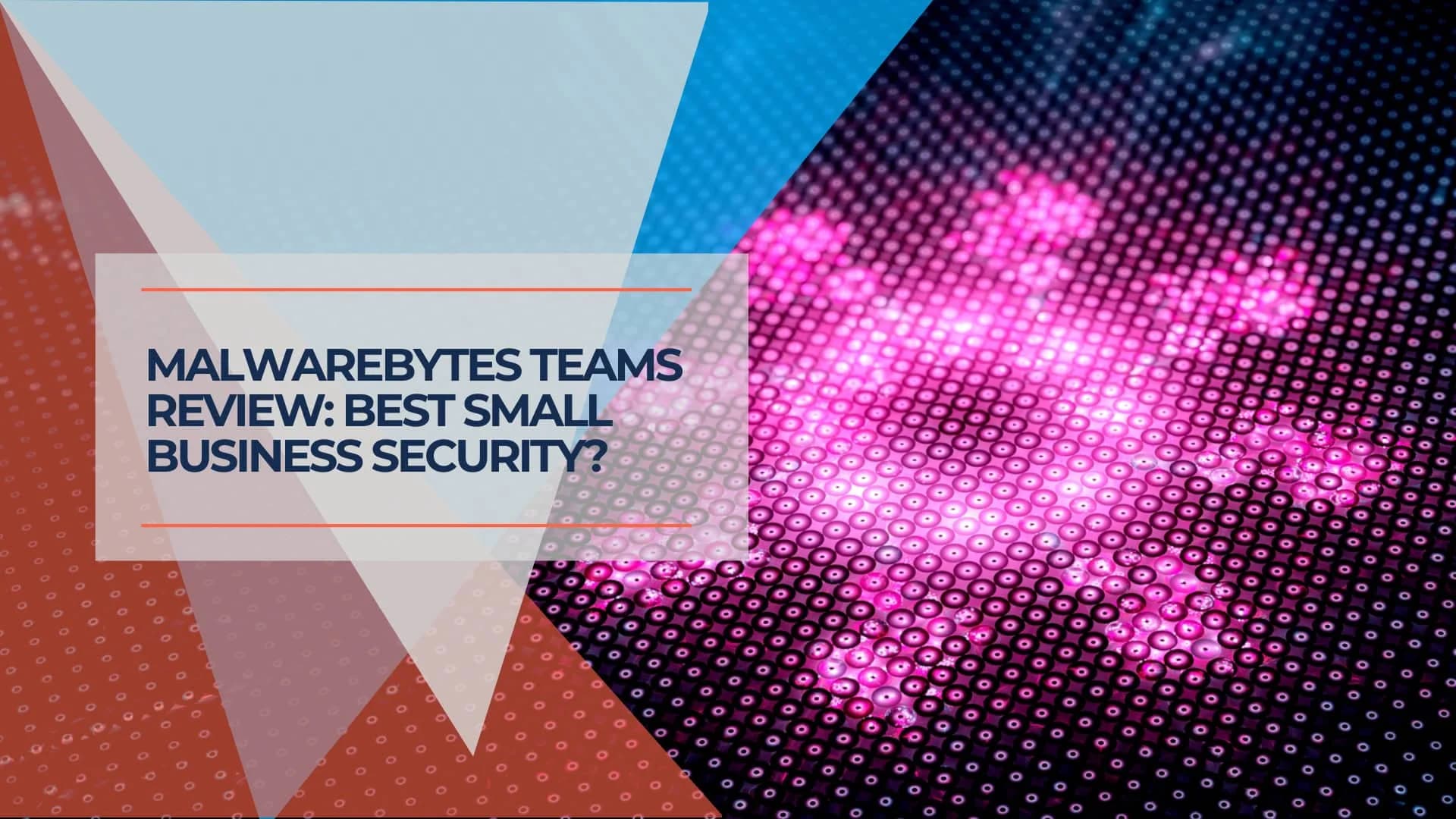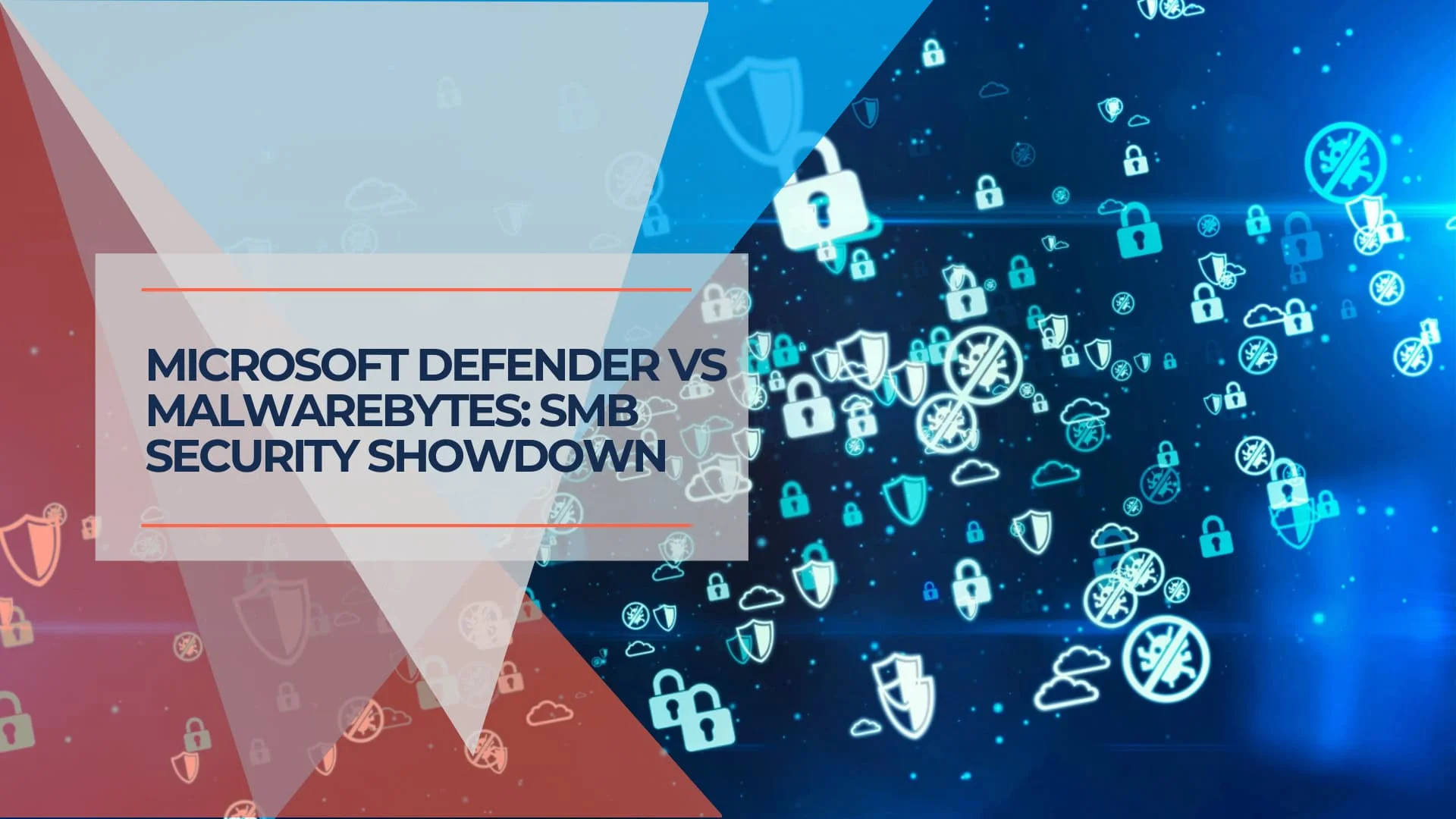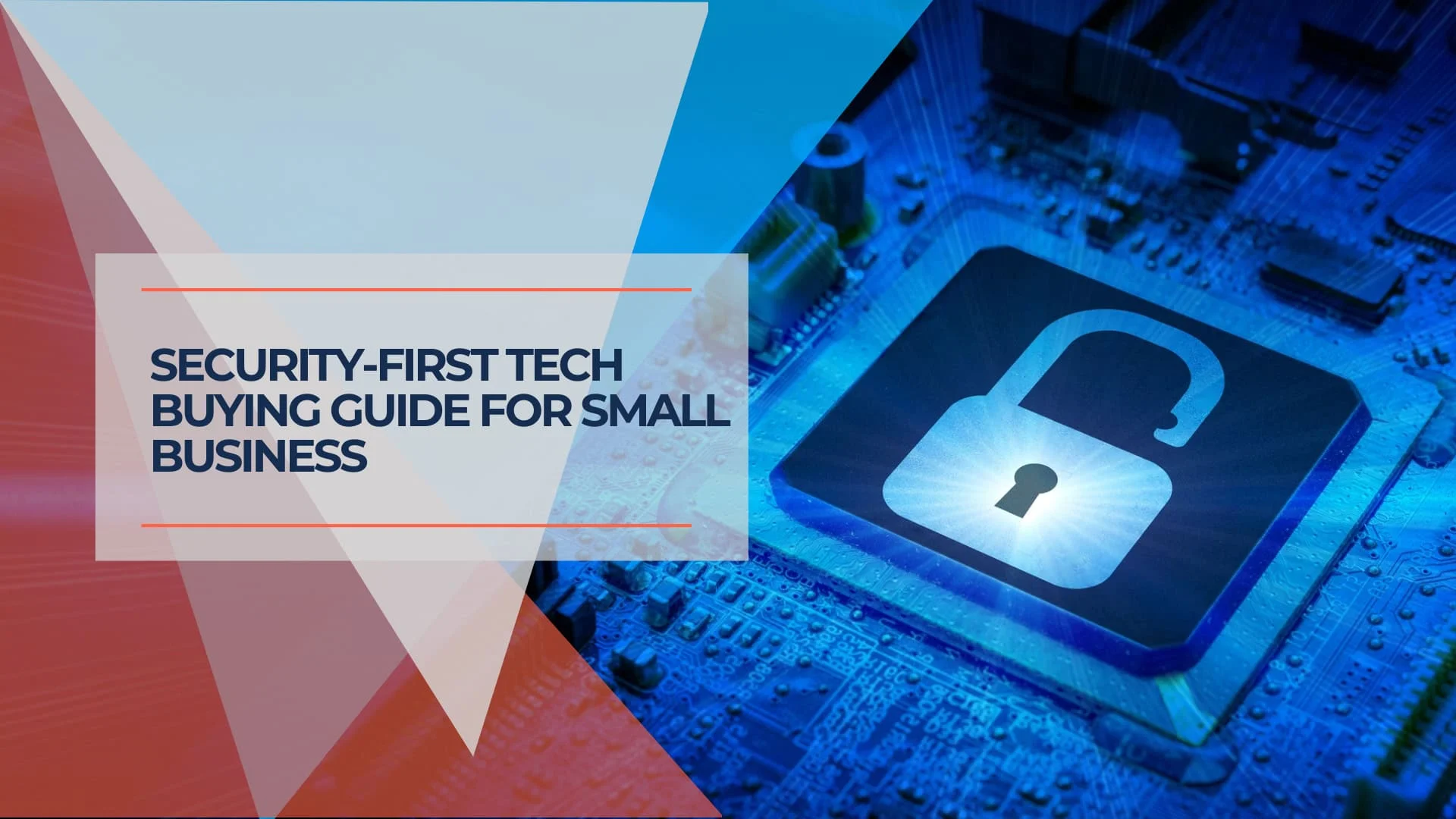Malwarebytes Business Review 2025: Comprehensive Analysis for Enterprise Security
In-depth review of Malwarebytes Teams and ThreatDown for business security. Pricing, features, testing results, and recommendations for small to medium businesses.


Affiliate Disclosure: This article contains affiliate links. If you make a purchase through these links, we may earn a small commission at no extra cost to you.
Key Takeaway
Malwarebytes has evolved from a specialized malware removal tool into a comprehensive business security platform with two distinct offerings: Teams for small organizations (1-20 devices) and ThreatDown for larger enterprises. Our testing reveals strong specialized threat detection capabilities, though results vary across different testing organizations. The platform excels in deployment simplicity and operational management, making it particularly suitable for businesses with limited IT resources.
Malwarebytes has undergone a significant transformation in recent years, repositioning itself from a consumer-focused malware removal specialist to a comprehensive business security provider. The company now offers a clearly differentiated product lineup designed to address the distinct needs of small businesses and larger enterprises.
This review examines Malwarebytes Teams and the ThreatDown platform through real-world business deployment, analyzing everything from initial setup to ongoing management. We've evaluated pricing structures, security effectiveness, competitive positioning, and practical implementation considerations to help businesses determine whether Malwarebytes aligns with their security requirements. For a comprehensive comparison with Microsoft's solution, see our Malwarebytes vs Microsoft Defender comparison.
Current Business Solutions Overview
Malwarebytes has streamlined its business offerings into two primary categories, eliminating much of the confusion that previously characterized its product lineup.
Malwarebytes Teams
Designed specifically for small businesses, Teams offers fixed pricing and pre-configured packages:
Package Options
- Sole Proprietor: 3 devices
- Boutique Business: 10 devices
- Small Office: 20 devices
- Pricing: $49.99 per device annually across all packages
This pricing model eliminates the complexity often associated with enterprise security licensing, providing transparent costs that small businesses can easily budget and understand.
ThreatDown by Malwarebytes
The ThreatDown platform serves larger organizations with four escalating service tiers:
- Core: Basic antivirus and endpoint protection
- Advanced: Adds EDR, ransomware rollback, and managed threat hunting
- Elite: Includes 24/7 managed detection and response (MDR)
- Ultimate: Full-featured offering with DNS filtering and premium support
This tiered approach allows organizations to select appropriate protection levels based on their security requirements and internal capabilities.
Pricing Analysis and Value Assessment
Transparent Cost Structure
One of Malwarebytes' notable strengths is pricing transparency, particularly compared to enterprise security vendors that often require extensive negotiations to determine actual costs.
Malwarebytes Teams maintains consistent pricing:
- Fixed rate of $49.99 per device annually
- No hidden implementation fees
- Includes support, updates, and core features
- Straightforward scaling with additional devices
ThreatDown pricing (verified August 2025) varies by tier and organization size:
- Advanced Tier: $52.49 for 10-99 devices, $69.99 for 100+ devices
- Elite Tier: $63.74 standard pricing, $84.99 for 100+ devices
- Ultimate Tier: Available through direct sales consultation
Competitive Pricing Context
| Solution | Annual Cost (25 devices) | Key Differentiators |
|---|---|---|
| Malwarebytes Teams | $1,250 | Simplified management, transparent pricing |
| Microsoft Defender Business | $900 | Office 365 integration, ecosystem benefits |
| CrowdStrike Falcon Go | $1,500 | Advanced threat hunting, enterprise features |
| Bitdefender GravityZone | $1,925 | Comprehensive feature set, customization |
The pricing analysis reveals Malwarebytes positioning itself in the middle tier, offering more features than basic solutions while remaining more accessible than premium enterprise platforms.
Security Effectiveness and Testing Results
Specialized Testing Performance
Malwarebytes demonstrates strong performance in specialized security testing environments, particularly in evaluations conducted by MRG Effitas, where the company has achieved notable recognition:
- 14 consecutive quarters of perfect certification (Q3 2021 through Q3 2023)
- 100% detection rates across malware, ransomware, exploits, and banking protection categories
- Inaugural Product of the Year 2025 award from MRG Effitas (March 2025)
- Recent Android 360° Certificate recognition (August 2025)
Broader Testing Landscape
Testing results across different independent organizations show more varied outcomes:
Consistent Performance Areas
- MRG Effitas specialized testing with perfect scores
- Banking Trojan protection certifications
- Exploit prevention demonstrations
Mixed Results
- Varied performance in some AV-Test evaluations
- Limited recent participation in AV-Comparatives business product testing
- Inconsistent results across different consumer-focused testing scenarios
Real-World Deployment Feedback
Customer experience data provides additional validation of security effectiveness:
- Over 1,079 verified G2 reviews with predominantly positive ratings
- Educational institutions report improved security postures
- Managed service provider deployments show reduced incident rates
- Customer satisfaction scores consistently above industry averages
For businesses evaluating their complete security infrastructure, combining endpoint protection like Malwarebytes with robust business password management creates a comprehensive security foundation.
How to Install Malwarebytes for Teams
Feature Analysis by Business Tier
Malwarebytes Teams Capabilities
Core Protection Features:
- AI-powered threat detection and prevention
- Multi-layered malware protection
- Ransomware defense mechanisms
- Browser Guard for web protection and ad blocking
- 24/7 priority support access
Intentional Limitations: Teams deliberately focuses on essential security functions while excluding advanced features that require specialized expertise:
- No advanced EDR capabilities
- Limited threat hunting functionality
- Simplified policy controls
- Reduced API integration options
This approach aligns with the target audience of small businesses that prioritize operational simplicity over extensive customization.
ThreatDown Advanced Enhancements
Additional Capabilities:
- Comprehensive endpoint detection and response (EDR)
- Ransomware rollback with 7-day recovery windows
- Automated patch management
- Managed threat hunting services
- Advanced reporting and analytics dashboards
Ransomware Rollback Value
The ransomware rollback feature represents a significant value proposition for businesses lacking comprehensive backup infrastructure, potentially justifying the upgrade cost through business continuity benefits alone.
ThreatDown Elite Managed Services
Professional Security Operations:
- 24/7/365 managed detection and response
- Expert security analyst support
- Incident investigation and containment services
- Threat intelligence integration
- Compliance reporting assistance
This tier effectively extends internal security capabilities for organizations lacking dedicated security personnel while maintaining the operational simplicity that characterizes the Malwarebytes approach.
Implementation and Management Experience
Deployment Characteristics
Installation and Setup:
- Teams deployment is typically completed within minutes per endpoint
- 24-hour organization-wide rollouts are commonly achieved
- Single lightweight agent architecture minimizes system impact
- Cloud-based management eliminates infrastructure requirements
Integration Capabilities:
- Active Directory authentication support
- SCCM deployment compatibility
- Popular RMM platform integrations (ConnectWise, Kaseya, Atera)
- Microsoft 365 and Google Workspace compatibility
Ongoing Management Requirements
Administrative Overhead: Small businesses typically report spending 1-2 hours monthly on routine management tasks, significantly less than enterprise security platforms, which often require dedicated personnel.
Automated Capabilities:
- Real-time threat response and remediation
- Scheduled reporting and compliance documentation
- Policy enforcement without constant oversight
- Centralized dashboard for multi-location management
Trade-off Considerations
The simplified management approach necessarily limits granular control options and customization capabilities compared to enterprise-focused platforms.
Competitive Analysis
Microsoft Defender for Business
Microsoft's Advantages:
- Significantly lower pricing at $3 per user monthly
- Deep integration with Office 365 and Microsoft ecosystem
- Established enterprise relationships and support infrastructure
Malwarebytes' Competitive Position:
- Streamlined deployment process with fewer configuration requirements
- Consistent high customer satisfaction ratings
- Specialized expertise in malware detection and remediation
- Cross-platform support, including Mac and mobile devices
CrowdStrike Falcon
CrowdStrike's Strengths:
- Industry-leading threat detection and response capabilities
- Advanced threat hunting and forensic investigation tools
- Comprehensive enterprise security platform features
Malwarebytes' Differentiation:
- Significantly reduced operational complexity
- More accessible pricing for small and medium businesses
- Faster deployment timelines
- Lower ongoing management requirements
Bitdefender GravityZone
Bitdefender's Benefits:
- Comprehensive feature set with extensive customization
- Strong performance across independent testing organizations
- Advanced policy control and configuration options
For organizations requiring more granular control and customization options, Bitdefender GravityZone Business Security offers comprehensive enterprise features with extensive configuration capabilities.
Malwarebytes' Alternative Approach:
- Superior ease of use and deployment simplicity
- Reduced management overhead for resource-constrained organizations
- Higher customer support satisfaction ratings
- Focus on operational efficiency over feature breadth
Business Size and Use Case Recommendations
Small Business Environments (1-20 Employees)
Malwarebytes Teams Optimal Scenarios:
- Professional services firms with limited IT infrastructure
- Small retail operations requiring straightforward protection
- Healthcare practices needing compliance-supportive security
- Knowledge worker environments prioritizing minimal disruption
Value Proposition
Teams provides enterprise-grade protection without requiring technical expertise, allowing small businesses to focus on core operations while maintaining robust security.
Medium Business Environments (20-100 Employees)
ThreatDown Advanced Benefits:
- Comprehensive protection including EDR capabilities
- Ransomware recovery features supporting business continuity
- Managed threat hunting without internal expertise requirements
- Scalable architecture supporting growth
Target Organizations: Growing businesses outgrowing basic protection, companies facing increased compliance requirements, and organizations with valuable intellectual property requiring enhanced protection.
Larger Environments (100+ Employees)
ThreatDown Elite Considerations:
- 24/7 expert oversight compensating for limited internal security resources
- Managed approach reducing internal operational requirements
- Comprehensive reporting supporting compliance and governance needs
Alternative Evaluation: Organizations with dedicated security teams or complex requirements may benefit from more feature-rich enterprise platforms that offer greater customization and control.
Industry-Specific Applications
Healthcare Organizations
Compliance Support:
- SOC 2 Type II certification supporting HIPAA requirements
- Comprehensive audit logging and reporting capabilities
- Access controls and monitoring features
- Incident documentation for regulatory reporting
Implementation Considerations: Healthcare organizations may require additional Business Associate Agreements and supplementary safeguards depending on specific compliance interpretations.
Financial Services
Regulatory Alignment:
- PCI DSS compliance support for payment processing
- SOX audit capabilities for publicly traded companies
- Risk assessment reporting for regulatory examinations
- Incident response documentation meeting industry standards
Enhancement Requirements: Financial services organizations often require additional controls and specialized compliance tools beyond standard endpoint protection.
Educational Institutions
Sector-Specific Benefits:
- FERPA compliance support for student data protection
- Multi-platform device support for diverse educational environments
- Budget-friendly pricing suitable for educational funding constraints
- Simplified deployment across varied technical infrastructures
Demonstrated Results
Educational institutions consistently report reduced security incidents and improved network performance following Malwarebytes deployment.
Return on Investment Analysis
Cost-Benefit Calculation
Direct Cost Analysis (25 devices, 3-year period):
Malwarebytes Teams Total Cost
- Software licensing: $3,750
- Implementation: $500 (minimal due to simplified deployment)
- Management: $1,800 (estimated 1 hour monthly at $20/hour)
- Total 3-year cost: $6,050
Comparable Enterprise Solution
- Software licensing: $7,500-$15,000
- Implementation: $2,000-$5,000
- Management: $5,400-$10,800
- Total 3-year cost: $14,900-$30,800
Quantifiable Benefits
Operational Improvements:
- Reduced security incident response and cleanup costs
- Lower help desk ticket volume through preventive protection
- Improved employee productivity via reduced system downtime
- Faster deployment compared to enterprise alternatives
Risk Mitigation Value:
- Ransomware protection with rapid recovery capabilities
- Compliance support reduces audit and penalty risks
- Business reputation protection through security incident prevention
- Operational continuity assurance during security events
Support and Professional Services
Standard Support Infrastructure
Business-Grade Support: All business tiers include 24/7 human support, representing a significant advantage for organizations lacking internal IT expertise. Response times and escalation procedures exceed consumer support standards.
Self-Service Resources:
- Malwarebytes Academy for security education
- Comprehensive documentation library
- Community forums with peer and expert participation
- Video tutorials covering implementation and management
Professional Services Portfolio
Available Services:
- Security assessments and gap analysis
- Implementation planning and deployment assistance
- Migration support from competitive solutions
- Customized training programs for internal teams
Managed Detection and Response (Elite tier): The Elite tier includes comprehensive managed services with 24/7/365 expert monitoring, incident investigation and response, threat intelligence integration, and compliance reporting assistance.
Platform Limitations and Considerations
When Malwarebytes May Not Fit
Organizational Characteristics:
- Large enterprises with dedicated security operations centers
- Organizations requiring extensive threat hunting and forensic capabilities
- Businesses needing complex policy customization and granular controls
- Highly regulated industries with specialized security requirements
Technical Limitations:
- Reduced forensic investigation capabilities compared to enterprise platforms
- Limited integration options with specialized security tools
- Simplified reporting compared to advanced SIEM solutions
- Fewer customization options for complex environments
Testing and Evaluation Considerations
Assessment Recommendations: Given the mixed results across different testing organizations, prospective customers should conduct proof-of-concept deployments rather than relying solely on third-party test results. Independent security assessments can help validate fit with specific environments and requirements.
Performance Evaluation: Organizations should test Malwarebytes against their current threat landscape, evaluate compatibility with existing systems, and assess the balance between simplicity and feature requirements.
Decision Framework
Selection Criteria Analysis
Choose Malwarebytes Teams When
- Organization size: 1-20 devices
- IT expertise: Limited or non-existent
- Priority: Operational simplicity over feature complexity
- Budget: Cost-conscious with transparent pricing requirements
- Industry: Professional services, retail, general business operations
Choose ThreatDown Advanced When
- Organization size: 20-100 employees
- Growth stage: Outgrowing basic protection capabilities
- Requirements: Need for EDR and advanced security features
- IT capability: Basic infrastructure with limited security expertise
- Priorities: Comprehensive protection with simplified management
Consider Alternatives When
- Organization size: 500+ employees with dedicated security teams
- Requirements: Advanced threat hunting and forensic capabilities
- Customization: Extensive policy and configuration requirements
- Industry: Highly regulated sectors with specialized compliance needs
- Integration: Complex existing security tool ecosystems
Implementation Planning
Pre-Deployment Assessment: Organizations should evaluate current security posture, inventory devices requiring protection, identify integration requirements, and establish user communication strategies before beginning deployment.
Phased Rollout Strategy:
- Week 1: Pilot deployment on 10-20% of devices
- Week 2: Full organizational rollout with monitoring
- Week 3: Optimization and user training completion
Post-Deployment Management: Establish monthly review procedures for security reports, policy adjustments, and performance assessment to ensure ongoing effectiveness.
Conclusion
Our Final Assessment
Malwarebytes has successfully repositioned itself as a viable business security platform by focusing on operational simplicity without sacrificing security effectiveness. The clear differentiation between Teams and ThreatDown addresses distinct market segments while providing a logical growth path for expanding organizations.
Rating: 4/5 – Excellent for small businesses prioritizing simplicity and ease of management.
Strengths include transparent pricing, simplified deployment and management, demonstrated threat detection capabilities in specialized testing, and consistently high customer satisfaction ratings. These characteristics address core small business requirements where limited IT resources and budget constraints represent primary concerns.
Areas requiring consideration include varied performance across different testing organizations and reduced feature depth compared to enterprise-focused platforms. Organizations should evaluate Malwarebytes through direct testing rather than relying solely on third-party assessments.
Malwarebytes represents a suitable choice for small to medium businesses prioritizing operational simplicity, cost-effectiveness, and ease of management. The platform works particularly well for professional services, retail, healthcare practices, and knowledge worker environments where security should operate transparently without disrupting core business operations.
Enterprise alternatives may be more appropriate for organizations requiring comprehensive security stacks, advanced threat hunting capabilities, extensive customization options, or operating in highly regulated industries with specialized requirements.
The decision ultimately depends on organizational priorities: operational simplicity versus feature breadth, cost optimization versus cutting-edge capabilities, and ease of use versus customization flexibility. For many small and medium businesses, Malwarebytes' focus on the former characteristics represents precisely what they require from a security platform.
Frequently Asked Questions
How does Malwarebytes compare to free antivirus solutions?
Malwarebytes business solutions provide enterprise-grade features, including centralized management, priority support, advanced threat detection, and compliance reporting that free consumer solutions lack. The business platform also includes EDR capabilities, managed threat hunting, and professional support infrastructure.
Can Malwarebytes replace existing enterprise security tools?
Malwarebytes can serve as a comprehensive endpoint protection platform for small to medium businesses. However, organizations with complex security requirements, dedicated security teams, or extensive compliance needs may require additional specialized tools or more feature-rich enterprise platforms.
What happens during the migration from competitor solutions?
Malwarebytes provides migration support, including assessment tools, deployment assistance, and transition documentation. The process typically involves removing existing security software, deploying Malwarebytes agents, and configuring policies to match business requirements.
How does the ransomware rollback feature work?
ThreatDown Advanced and higher tiers include ransomware rollback capability that maintains 7-day recovery points. If ransomware is detected, the system can restore affected files to their pre-infection state, providing business continuity without requiring separate backup infrastructure.
Is Malwarebytes suitable for remote work environments?
Yes, Malwarebytes supports remote work through cloud-based management, cross-platform protection, and VPN-independent operation. The centralized dashboard allows IT administrators to monitor and manage distributed devices regardless of location.
What level of technical expertise is required for implementation?
Malwarebytes Teams requires minimal technical expertise, and most small businesses can complete deployment and ongoing management without dedicated IT personnel. ThreatDown tiers may require basic IT knowledge for advanced configuration, though professional services are available for complex implementations.
This review is based on current product information as of August 2025. Features, pricing, and capabilities may change. Organizations should verify current specifications and conduct proof-of-concept testing before making purchasing decisions.
Related Resources
- Malwarebytes vs Microsoft Defender Comparison – Head-to-head analysis
- Best Business Password Managers – Security tool recommendations
- NIST CSF 2.0 Cybersecurity Tools – Framework compliance
- Cybersecurity Services – Professional security support
Related Articles
More from Cybersecurity

Malwarebytes vs Microsoft Defender Business: Complete SMB Security Comparison 2025
Compare Malwarebytes Teams and Microsoft Defender Business for small business security. Pricing analysis, security effectiveness, implementation requirements, and real-world scenarios to help you choose the right endpoint protection.
14 min read

AI-Powered Cyberattacks: Small Business Defense Guide
Practical guide to defending against AI-enhanced cybersecurity threats. Learn how AI changes common attack methods and build effective protection for $182-308/month with a straightforward 90-day implementation timeline.
23 min read

Security by Design for Small Business: Building Defense Into Your Technology Foundation (2025)
Comprehensive guide to security by design for small businesses. Build protection into technology choices from day one with modern device features, network security, and strategic procurement processes.
19 min read